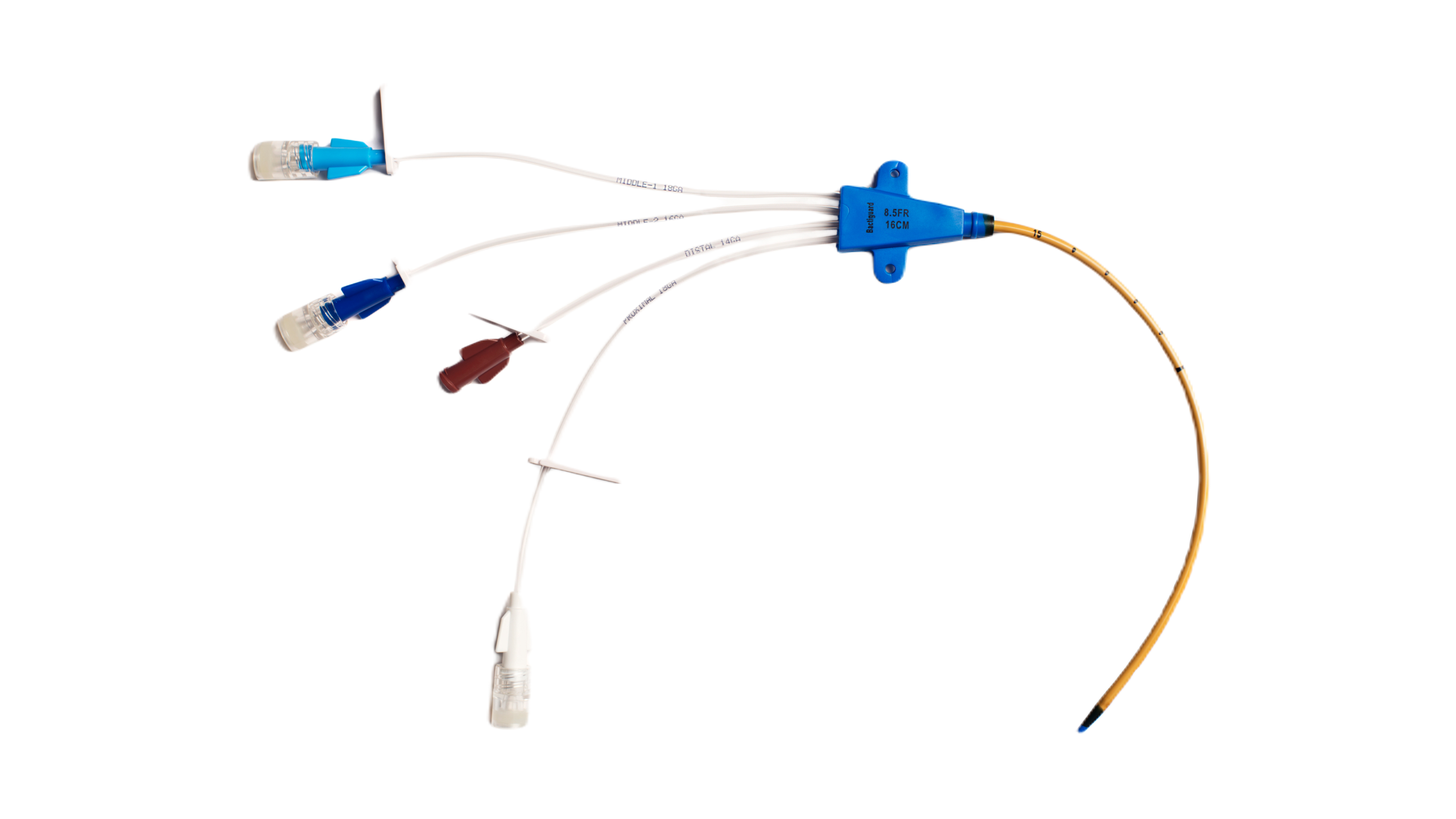Preparation, insertion and maintenance of a central venous catheter
A guide how to prepare, insert (with straight needle, Y-valve needle or Raulerson syringe) and maintain a central venous catheter to prevent catheter related infections.

Catheter related bloodstream infection is one of the most common healthcare associated infections4 and at the same time one of the most expensive and fatal complications associated with central venous catheters. The catheter surface attracts microbes, which colonize it and may develop a biofilm leading to infection.
Bactiguard’s infection prevention central venous catheter, BIP CVC, with Bactiguard coating reduces microbial adhesion, which decreases the risk of biofilm formation and infection.
The Bactiguard technology (Bactiguard Infection Protection) is based on a very thin noble metal alloy coating, firmly attached to the catheter surface. When in contact with fluids (blood), the noble metals create a galvanic effect which reduces microbial adhesion. This means that less bacteria adhere to the catheter surface, which reduces the risk of biofilm formation leading to infection.
The technology is safe to use, the coating is firmly attached to the catheter and the amount of noble metals at the surface is very low and below all safety limits for each metal. There is no release of any toxic or pharmacological quantities, as opposed to traditional coating technologies that often depend on the release of substances that kill bacteria, e.g. high concentrations of silver ions, chlorhexidine or antibiotics.
The technology is well proven, more than 100,000 patients have been included in clinical trials and over 200 million catheters have been used without any reported adverse events related to the coating.
Thrombotic complications are common and lead to obstruction of blood flow and catheter dysfunction. The catheter may need to be exchanged and the risk of infection increases, leading to increased costs of care. Catheter-related thrombosis leads to increased morbidity and may increase mortality due to embolic events.5
The Bactiguard coating has shown very good blood compatibility.2 In addition, clinical data show that there is no increased risk of thrombosis or haemolysis when using BIP CVC when compared to uncoated CVCs.3
The Bactiguard technology is associated with lower length of hospital stay costs, lower treatment costs and improved patient quality of life.6
The BIP CVC is used for administration of drugs and intravenous solutions, sample blood and for blood pressure monitoring. It is made of polyurethane, coated with the Bactiguard coating and approved for use up to 30 days.
BIP CVC is available in many different sizes, lengths and number of lumens (1-4 lumens), as well as with a straight needle, Y-valve needle or Raulerson syringe.
References:
1. Goldschmidt H, et al. 1995; Prevention of catheter-related infections by silver coated central venous catheters in oncological patients. Zentralbl Bakteriol 1995 Dec;283(2):215-223.
2. Vafa Homann et al. 2015; J. Improved ex vivo blood compatibility of central venous catheter with noble metal alloy coating. J Biomed Mater Res B Appl Biomater. 2016;104(7):1359–1365. doi:10.1002/jbm.b.33403.
3. Harter et al, Cancer. 94 (1):245–251 (2002).
4. Klevens RM et al. Estimating healthcare associated infections and deaths in U.S. hospitals, 2002 Public Health Rep. 2007 Mar-Apr;122(2):160–6.
5. Wall et al. Catheter-related thrombosis: A practical approach, Journal of the Intensive Care Society 2016, Vol. 17(2) 160–167
6. Saint S. et al. Arch Intern Med. 2000;160:2670–2675.